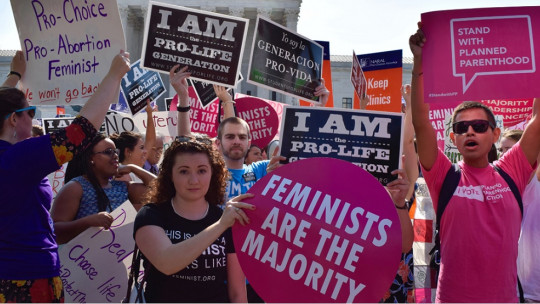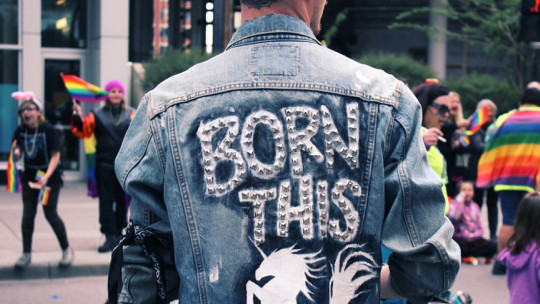
And he asked him: What is your name?
And he said to him: My name is Legion, because we are many.
—Mark 5:9
In society there have always been different ways of understanding the world, despite the fact that the majority option imposes the social norm of the moment However, there have been historical contexts in which these small movements have managed to influence and change the course, such as the feminist or sexual revolution. It is the process of minority influence
However, minorities currently have a new factor: they have no space-time limits. Previously, minorities suffered from limits on visibility; Without the Internet it was strange to see people with different values and even less so, that they came together to form a solid group. But today, The high connectivity in which we live allows us to contemplate different value models Thus, animal rights, environmentalist and independence movements are inextinguishable voices on social networks.
But How are these minority groups formed? One day one raises one’s voice and forms a minority? And how does a minority prevail over the majority regime? These issues have been the focus of attention in the Group Psychology for decades, but currently a new one is added: how is a minority managed on social networks?
How are minorities formed?
We will begin by answering the first of the questions: how they are formed To start the influence process, Every minority group must start from a base structure with specific characteristicswhich we will summarize as (Doms and Moscovici, 1984; Levine and Russo, 1987):
How does the minority influence?
To understand how the minority influences it is necessary to understand that its functioning is different from that of the majority, developing different influence processes (Moscovici and Personnaz, 1980). These different forms of management are what begin a process of influence by conversion (Perez, 1994).
- Minority: informational influence Due to the very fact of being a minority, there is not many people supporting the proposal. Therefore, the influence process cannot focus on interpersonal treatment, since if we go by numbers, the minority would lose out. In this case, what is important is the treatment of the information. The majority has to control what each of its members values positively, so what would happen if the minority’s alternative begins to be considered positive? That is the core, managing the proposal so that it is truthful and possible; that is evident to people without posing impossible things.
- Conversion process It is characterized by causing indirect and latent changes. But at street level, conversion manifests itself in gaining support, gaining members who accept the proposal. From this follows the first consequence, a breakdown of the unanimity of the majority. This fact develops in the form of a snowball effect, gradually increasing as the loss of members of the majority shows deficits in its internal consistency. That is, as the minority receives more support, it is revealed that the majority is not so consistent, and that part of it accepts and supports the alternative. Members increasingly begin to question the veracity of the proposal, because “those who think like me are beginning to accept it.”
In this way the minority progressively chooses to become a necessity in society. While movements such as animalism or environmentalism are associated with positive traits, people tend to develop a need to include them in our daily lives. If concern for animals or the ecosystem is well seen in society, each person wants to see themselves accepted by society, so including those values is adaptive and provokes a feeling of consonance and well-being
How is this influence managed on social networks?
Until now, we can understand how they work, but in the cyber age, we constantly observe different minorities. However, Very few of the readers have been in Tordesillas, or are inhabitants of Catalonia, to know about the anti-bullfighting or independence movement in first person. However, they have not posed barriers for minorities to try to exert their influence; because?
- Social stratification In social networks, messages are distinguished by sources that vary in degree of formality and legitimacy, with “majority” and minority” corresponding to different social strata. The message posted by a neighbor is not received in the same way as that of the president of the government. This is because the majorities, being the origin of the social norm, are translated into legislation and laws; the voice of the majority is normalized and legitimized. This fact leaves minorities as the voice of ordinary people as a counterpart. Therefore, representing oneself as a minority implies presenting oneself as the voice of the people. I understand your proposal as a need that current politics – the majority – does not satisfy. It is appropriate to take into account both the level of content and the form of the messages: mediate between formality/informality since depending on which initiatives it will be convenient for them to be promoted by people with different technical/professional levels, depending on whether it is in order to support objectivity. or promote empathy. In this sense, the minority has objectives corresponding to the “voice of the people” and expresses itself in the “language of the people.” It must be taken into account that the minority’s thinking is “we are not them, but we want to reach them.”
- Objectivity The previous premise conflicts with the informative treatment of minorities. Let us keep in mind that in social networks there is no spatiotemporal context, that is, messages can be issued/received regardless of geography and time. Therefore, attention should be paid to the fact that a reality can be made known to people who do not experience it personally, and what is more, the objective is to make them participate in that reality. Due to this, presenting oneself as “the voice of the people” can be a source of one’s own disqualification, since it can be very subjective. In other words, if it is implied that the proposal is given by the neighbor, we all know that the neighbor may be wrong and that this is his opinion, one of many. This is how it is necessary to provide objective evidence, to show that what the minority believes is not a fact that is being invented, but rather that their opinion has truthful bases. Establish that the proposal is not an opinion, but rather its background reality.
- Management as Mass Media Let’s not forget that social networks are a means of communication. Therefore, it is relevant to focus on how to manage information, how to retransmit ideals. Regarding temporality, the publication of several messages in a short period of time causes a noise and overload effect: the information overlaps one on top of the other and collapses people, like a murmur from which nothing clear can be made. The same thing happens with quantity, an excess can serve to highlight specific premises, but it can also give the impression of not contributing anything new and being repetitive. Concise information, clear premises, objective data and messages focused on objectives, being constant and coherent with the alternative ideals of the minority.
Some conclusions
With the previous description of the process, we can understand how, little by little, minorities strive to gain social legitimacy, make the majority see the need to include them in their discourse and thus open avenues for negotiation. It is then when it will be necessary to modulate the forces and pressures of both sides, to reach a common agreement that harmonizes both extremes.
However, networks mark a new framework in which these influence processes must adapt Not only to achieve their own objectives, but to promote communicative health on the Internet and not promote it as a means of decommunication. The debate about correct management in networks is open; Is the Catalan independence movement a people’s movement or does it translate into a political proposal? Where are the reins of the independence movement, in the citizens or in the politicians? In Tordesillas, who was attacked, lancers or animal activists? Was the thematic center the aggression against the animal or its defenders? Does becoming an attribute of social tribes favor the objectives of environmentalism and vegetarianism? Is the vegetable plate photographed by followers or by contribution to the ecosystem?
- Doms, M. and Moscovici, S. (1984). Innovation and influence of minorities, in S. Moscovici (ed.): Social Psychology I: Influence and change of attitudes. Individuals and groups. Barcelona: Paidós, 1985.
- Levine, J.M., & Russo, E.M. (1987). Majority and minority influence, in C. Hendrick (ed.): Review of Personality and Social Psychology: Group Processes, Vol. 8, Newbury Park, CA: Sage.
- Mosovici, S., & Personnaz, B. (1980). Studies in social influence V: Minority influence and conversion behavior in a perceptual task, Journal of Experimental Social Psychology, 16, 270-282.
- Pérez, JA (1994). Social influence, in JF Morales (coord.): Social Psychology. Madrid: McGraw-Hill.








